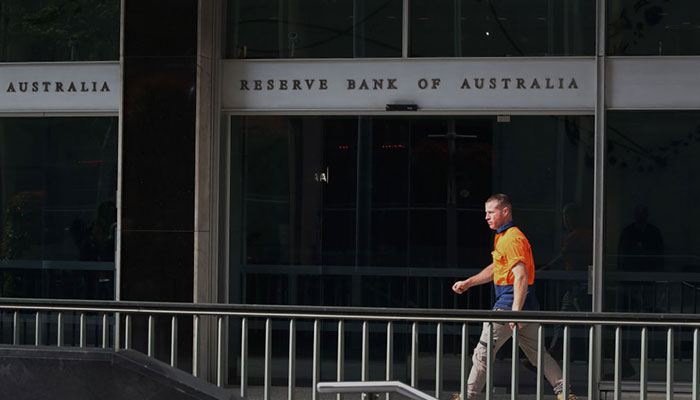The Reserve Bank of Australia (RBA) is poised to deliver its first interest rate decision for 2024, which will also be the first under its new timetable involving fewer, but longer, RBA board meetings each year.

The decision will be accompanied by the RBA’s usual comprehensive report on current economic trends and an update of its forecasts on both the economy and inflation in the coming years. There is plenty for the new governor, Michele Bullock, and the board to consider – both on the upside and the challenges as we move into 2024.
Price pressures ease
First the good news. After almost two years of high and rising inflation, the annual Consumer Price Index (CPI) has peaked, coming in at 4.1 per cent at the end of 2023 and confirming a clear decline in its pace. Inflation has fallen from a high of almost eight per cent at the end of 2022.
The December quarter data came in below expectations, raising the likelihood that there will be no more rate rises in this cycle, and that interest rates may be cut from the second half of 2024.
Much of this decline in inflation reflects the levelling out of global oil prices, the recovery of global supply chains post-Covid, and the moderation in household spending after the sharp 4.25 percentage point increase in interest rates since May 2022. (There were 13 interest rate rises between May 2022 and November 2023, taking the official cash rate to its current 4.35 per cent.)
Moreover, this result has been achieved within the context of an ongoing robust labour market. While the unemployment rate has risen slightly, at around 4 per cent, it remains close to its long-run equilibrium level (or ‘natural rate’). Indeed, the current unemployment rate is far below what has typically been necessary to get a 4 per cent decline in the pace of inflation. That is great news for households.
Addressing the longer-term issues like skilling up for the coming artificial intelligence revolution, putting a price on carbon to efficiently manage the energy transition, and ambitious tax reform that aligns with an ageing population seem off in the policy horizon.
But 4.1 per cent is still a way from the RBA’s long-run inflation target of two to three per cent. The sharp rise in housing rent prices is one reason for its persistence, as is the historical (and ongoing) underbuild of housing met with the 600,000-plus rise in migration into Australia in 2023.
But the bulk of the current excess inflation pace is due to large price rises of ordinary services like haircuts, childcare, insurance and domestic travel. The fear for the RBA is that the longer it takes for these domestic sources to moderate, the higher the risk that inflation expectations will rise above the long-run inflation target. In the past, only a recession has shifted expectations back down.
Household demand
With household demand for goods and services still running ahead of the economy’s ability to supply them, the best contribution the government can make is to tighten its budget belt, as the International Monetary Fund recently recommended. While the government has largely banked the tax receipts from the unexpected rise in global commodity prices (and hence offset part of its boost to local demand), it is increasing spending on its big-ticket priorities and hence adding to demand, such as for aged care, the National Disability Scheme and defence spending.
Moreover, the recent re-purposing of the 1 July tax cuts to provide cost-of-living relief to lower- and middle-income households are likely to be spent and thereby add further to overall demand pressures. That inescapable logic, which covers all cost-of-living relief efforts to varying extents, underpins why the focus of policy should stay on lowering inflation further.
Longer-term issues
All of this is playing out against the backdrop of weakening growth in Australia’s productivity – the level of output of goods and services for each hour worked and the only way that higher wages can be paid for without adding to inflation. Successive governments have largely ignored the dire trends in productivity growth seen over the past two decades.
Addressing the longer-term issues like skilling up for the coming artificial intelligence revolution, putting a price on carbon to efficiently manage the energy transition, and ambitious tax reform that aligns with an ageing population seem off in the policy horizon. Not a great backdrop to meet restless voter expectations for rising wages and more assistance with cost-of-living pressures while maintaining a low inflation rate over the medium-term.
RBA review
How the RBA balances these issues over 2024 can be hard to predict month to month. This is all the more so as the composition of its decision-making board (adding members with more interest rate expertise) and its communication strategy (broadening board member commentary on where rates might go) are set to change this year following the review of the RBA in 2023.
While none of the review’s recommendations affect the RBA’s longer-term inflation objective, their impact on the new board’s timing and volatility of future interest rate decisions from this year onwards could be significant.
Overall, while the financial market waits to see how these various developments evolve, it doesn’t expect an imminent change by the RBA in interest rates over the coming months of 2024. As to the outlook thereafter, the RBA will certainly have plenty to ponder.

David Orsmond, pictured, is a Professor of Economics at Macquarie Business School. He previously worked for over 25 years at the Reserve Bank of Australia and the International Monetary Fund.








